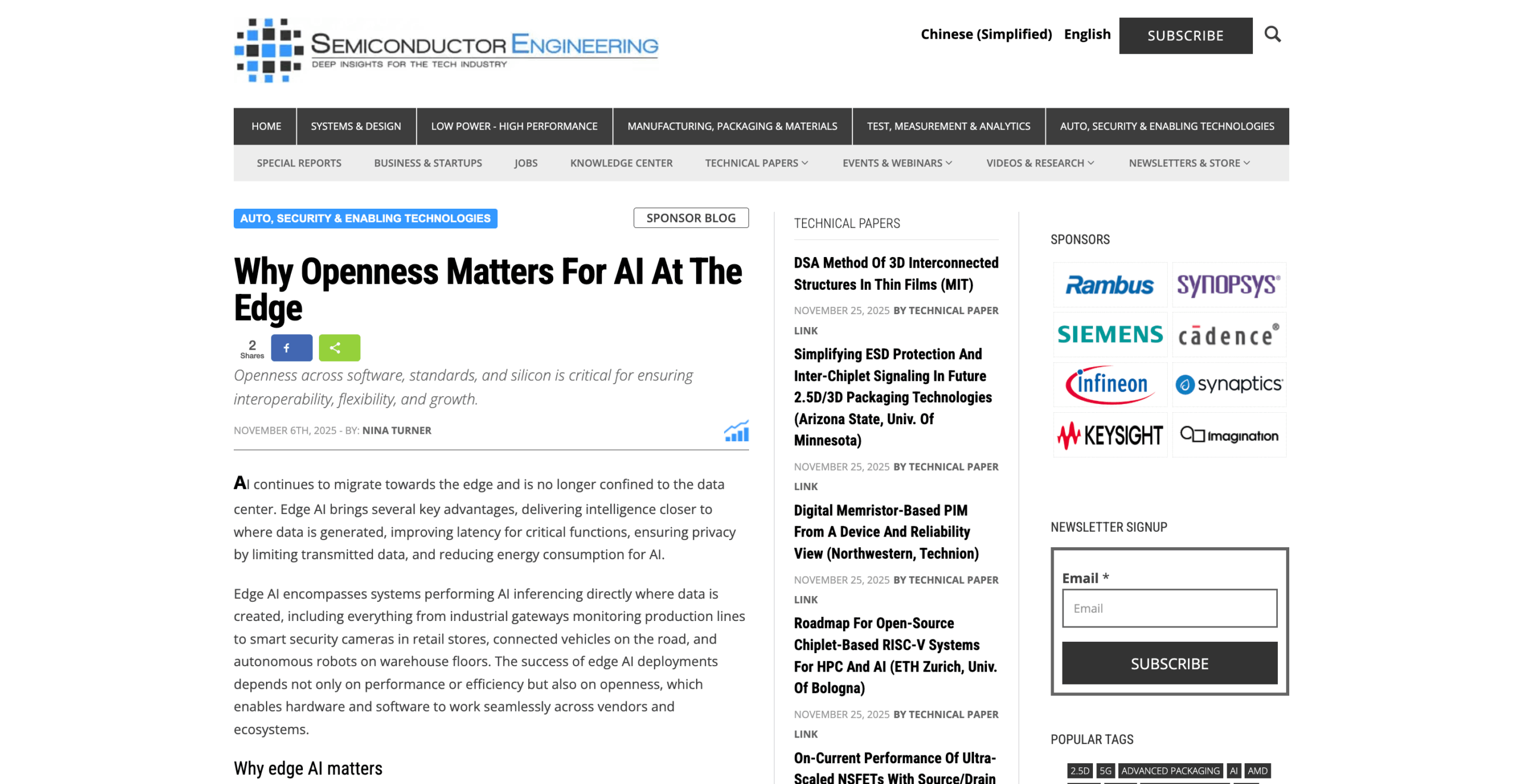
MONTREAL, CANADA and HSINCHU, TAIWAN – December 1, 2020 – The push for low-power and low-latency deep learning models, computing hardware, and systems for artificial intelligence (AI) inference on edge devices continues to create exciting new opportunities. There has been unprecedented interest from industry stakeholders in the development of hardware and software solutions for on-device deep learning, also called Edge AI. This has already begun to yield progress on hallmark applications such as keyword spotting in audio classification, anomaly detection and, in this case, person detection in computer vision applications. Specifically, tinyML, the branch of machine learning tailored to ultra-low power systems, holds tremendous promise. The efficiency of proposed solutions (milliwatt or even microwatt power consumption) and vast applicability and deployment of such devices in real-world settings will lead to over 100 billion IoT sensors and devices expected to ship over the next 5 years 1. The future of deep learning is poised to provide significant benefits to customers and end-users by way of affordable, eco-friendly and more accessible intelligence than ever before. See full press release.[/vc_column_text][/vc_column][/vc_row]]]>



